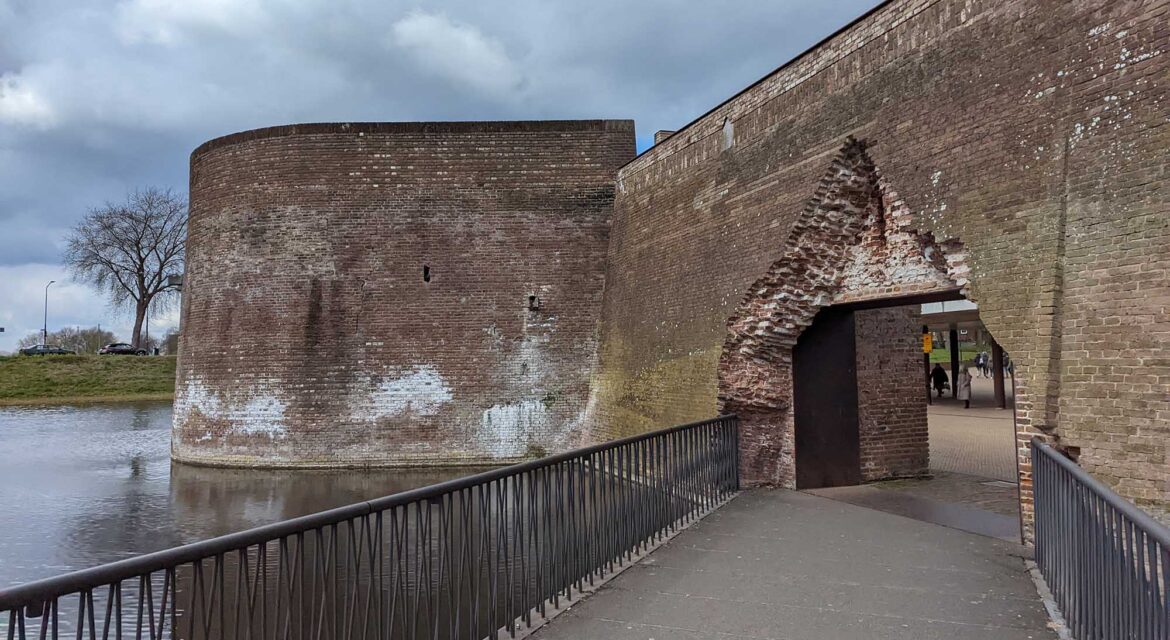 Hertogenbosch in the Netherlands became famous for sieges and battles that have taken place in multiple centuries, some of which compelled the use of water and walls to protect the city from attacking armies. As the city transitioned into the modern era, changes to the setup of the city put these pieces of history at risk but the transformation of the Zuiderpark Stadswalzone has seen these elements protected and developed in a way that ensures they will be essential connections to both the past and future of the entire region.
Hertogenbosch in the Netherlands became famous for sieges and battles that have taken place in multiple centuries, some of which compelled the use of water and walls to protect the city from attacking armies. As the city transitioned into the modern era, changes to the setup of the city put these pieces of history at risk but the transformation of the Zuiderpark Stadswalzone has seen these elements protected and developed in a way that ensures they will be essential connections to both the past and future of the entire region.

From Medieval Moat to Modern Park
 Hertogenbosch has literally been defined by conflict across the centuries. In the late 14th century, artificial waterways were dug to serve as a city moat and ramparts were constructed to protect the Medieval city. Centuries later, the center of the city was the setting for the Battle of ’s-Hertogenbosch in World War II. As the area continued to evolve, congestion and rising water levels threatened much of this history, which led to the restructuring of the Zuiderpark Stadswalzone to protect this history and solve these problems.
Hertogenbosch has literally been defined by conflict across the centuries. In the late 14th century, artificial waterways were dug to serve as a city moat and ramparts were constructed to protect the Medieval city. Centuries later, the center of the city was the setting for the Battle of ’s-Hertogenbosch in World War II. As the area continued to evolve, congestion and rising water levels threatened much of this history, which led to the restructuring of the Zuiderpark Stadswalzone to protect this history and solve these problems.
Restoration of the ancient moat enabled the creation of a large underground parking garage. The route from the main staircase of the parking garage takes visitors through five centuries of local history. Opened in 2015, the Vexpan (Association of operators of parking garages) awarded the project with the first ESPA Gold award in The Netherlands. It was just one of the many changes for the space though.
Installed in 2015, Andert de Neanderthaler is a bronze sculpture by Tom l’Istelle which depicts a life-sized Neanderthal sitting by a campfire, wearing a woolly rhinoceros coat. The piece was inspired by the remains of the Neanderthal camp that was uncovered during construction.
Other sculptures and pieces are art have been installed across the space, with the Medieval and contemporary walls all blending together. A marker calls out where Royal Welch Fulsiliers dashed over the lock gates to liberate the city center in 1944. The seizing of the lock gates opened the way for the capture of the city center and the defeat of the German occupiers.
These additions and developments are in the midst of centuries of history that have been preserved in the former city ramparts, moat and lock gate structures that are the main feature of the park. Providing residents and visitors with access to the modern community as well as the history of the region, the Zuiderpark Stadswalzone showcases what it can mean to transform a space without losing the essential elements of the legacy that it represents.
Connecting a Legacy
 Pieces of history can create challenges with the logistics of a modern city, which compels the displacement or destruction of many of these elements. The Zuiderpark Stadswalzone has instead utilized the existing moat, walls, locks and infrastructure of the area in a way that proves how much can be gained when these elements are transformed instead of being removed to connect both audiences and eras.
Pieces of history can create challenges with the logistics of a modern city, which compels the displacement or destruction of many of these elements. The Zuiderpark Stadswalzone has instead utilized the existing moat, walls, locks and infrastructure of the area in a way that proves how much can be gained when these elements are transformed instead of being removed to connect both audiences and eras.


